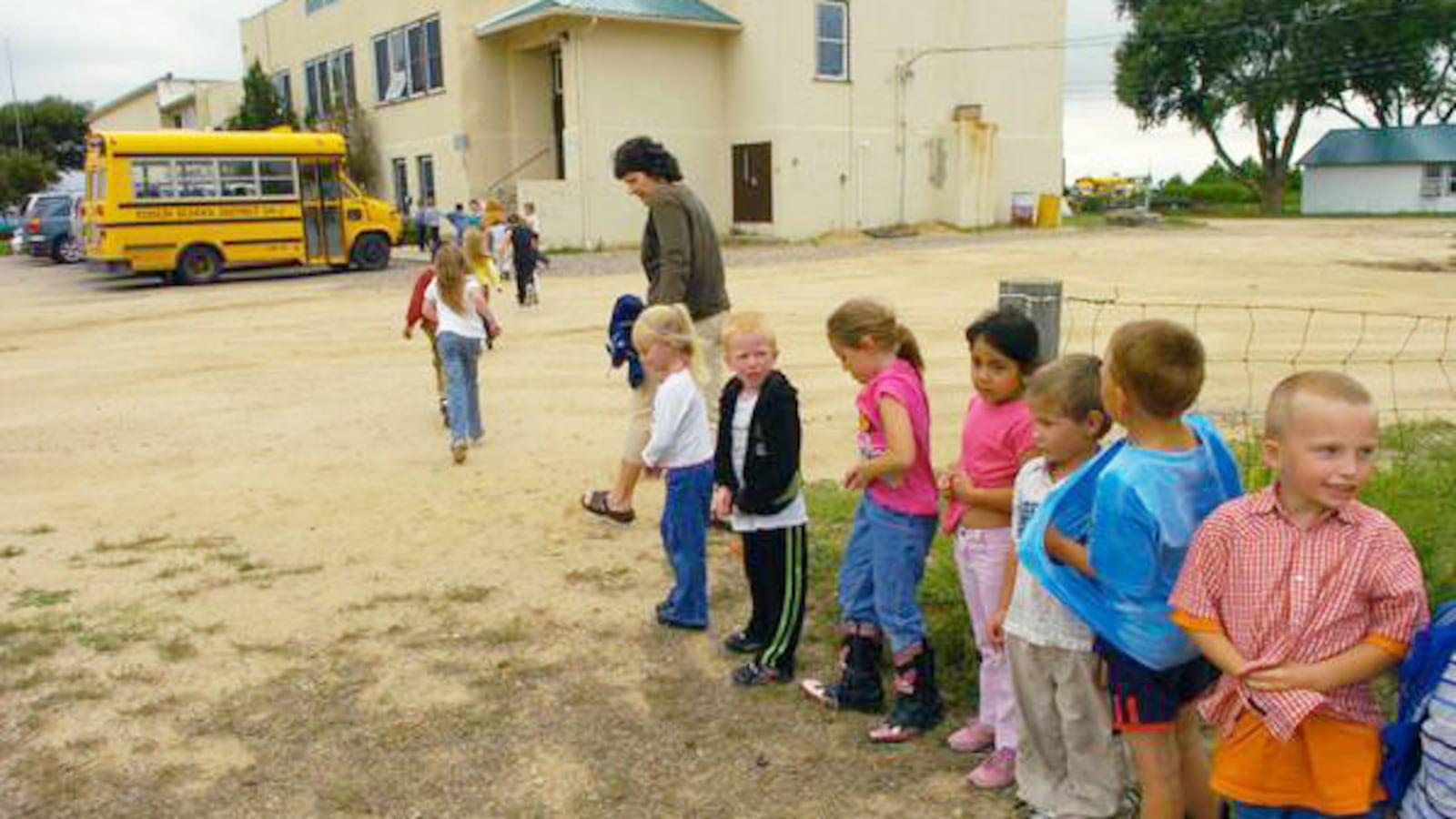Bills intended to help ease rural teacher shortages and generate more money for fixing and building schools won approval on the legislative session’s final day.
All three pieces of legislation had wide support, but the usual end-of-session confusion slowed their progress Wednesday as the clock ticked toward adjournment.
“This was a good day for rural Colorado, as good a day as any,” said Michelle Murphy, executive director of the Colorado Rural Alliance, an advocacy group for rural districts. The bills “didn’t go far enough to address the problems, but it’s a start,” she added.
The rural teachers measure, Senate Bill 16-104, pays for a teacher recruitment coordinator and for stipends to student teachers. It also covers stipends to rural teachers who want to improve their skills.
Rural districts have been facing increasing challenges finding and keeping teachers because of low salaries and geographic isolation.
The other two measures, Senate Bills 16-035 and 16-072, will increase revenues for the Building Excellent Schools Today school construction program. The program’s ability to help pay for large projects has been limited because it’s reached an annual cap on debt payments.
While any district can apply for a BEST grant, the program is focused on small districts that don’t have the financial capacity to build schools on their own.
The rural teachers bill has four elements:
- Stipends for up to 40 prospective teachers who agree to serve as student teachers in rural districts. The stipends of up to $2,800 would be applied to the student teachers’ college tuition. Students who receive stipends would agree to work in their rural districts for two years after receiving teaching degrees.
- Stipends of up to $6,000 for 20 current rural teachers who seek National Board Certification or certification to teach concurrent enrollment classes. Those teachers would have to agree to stay in their districts for three years.
- Funding for a rural education coordinator who will work to increase recruitment of teachers for rural districts, particularly by working with teacher preparation programs and encouraging students to consider rural jobs.
- Creation of a teacher cadet program to encourage rural students to consider teaching as a career.
“I’m really proud of the bill,” said sponsor Sen. Nancy Todd, D-Aurora. While acknowledging the bill is a small step, she said, “Hopefully it will be beneficial to rural areas.”
The bill’s original $1 million price tag made it a target, and it was trimmed as it moved through the process. The major provision cut was a plan to create three rural education centers. The bill’s final cost is $441,000.
While the funding may be small, Murphy said Todd and Republican cosponsors Sen. Jerry Sonnenberg of Sterling and Rep. Jon Becker of Fort Morgan “raised a critically important conversation about our rural teacher shortage.”
The centerpiece of SB 16-035 is a change in state investment policy. The state’s permanent fund, which draws revenue from leases, rents and royalties on state school lands, currently can be invested only in fixed-income securities like bonds. Last year those investments earned about $23 million, a 2.8 percent rate of return.
The bill allows the fund to be invested in higher-yielding securities. A professional investment advisory board would help the State Land Board and the state treasurer make those decisions.
The goal is to increase income and provide $21 million a year for general school funding and an additional $10 million a year for BEST. That would increase to $20 million in 2020. (The program already receives a minimum of $40 million a year in school lands revenues.)
“We found a creative way to help rural districts without raising taxes or cutting other programs,” said sponsor Sen. Mike Johnston, D-Denver.
The second measure, SB 16-072, raises BEST’s annual debt-repayment cap to $45 million next year and $50 million a year starting in 2017-18. The program combines state money and district matching funds to pay off the lease-purchase arrangements that are used to build larger projects like new schools. Increasing the annual debt payment cap plus additional revenue from SB 16-035 should help BEST resume approving more big projects.
“The $10 million is critical, critical for the BEST board,” Murphy said. Given how BEST can leverage its funds, she said the extra $10 million a year translates into about $190 million worth of construction and renovation projects, including local matching money.
After last-minute fiddling with amendments, the three bills passed both houses by wide margins Tuesday afternoon.
Rural schools started the week on a good note with passage of House Bill 14-1440, which reduces filing requirements for improvement plans by most schools and districts. Passage of the bill was of particular interest to about 40 rural districts not covered by an earlier law that eased the requirements for rural districts with fewer than 1,000 students.
The 2016 session’s two biggest education issues, charter school funding and flexibility and privacy protections for student data, were resolved a bit earlier. The hard-fought charter issue reached agreement Tuesday. The data privacy bill, which had smooth sailing through the legislature, passed last week.
There were 94 education-related bills introduced during the 2016 session, a little under half of which died. Check the fates and final versions of all those measures in the Education Bill Tracker.

